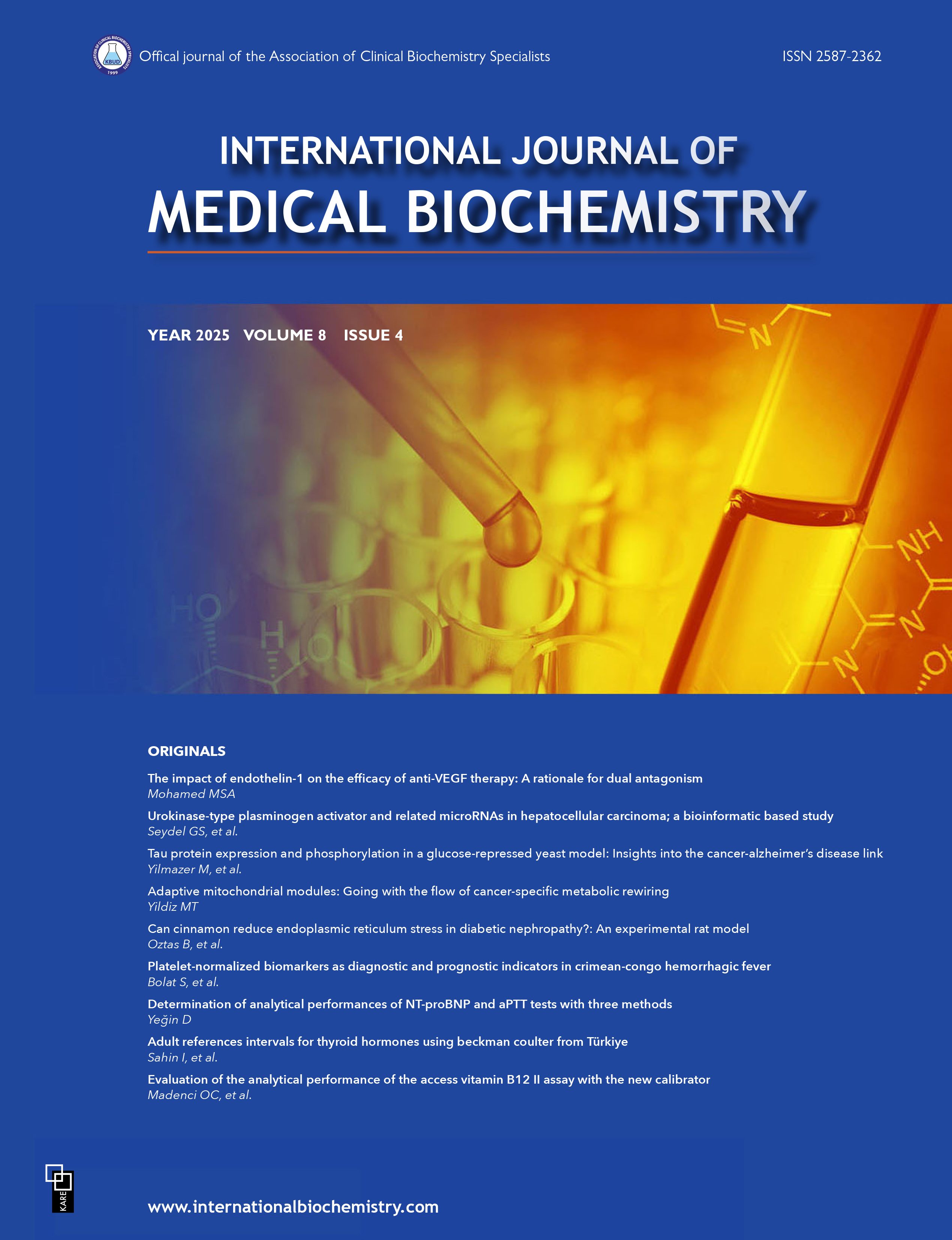The relationship between plasma viscosity and endotel markers in patients with ascending aortic aneurysms: A pilot study
Bahar Öztürk Kurt1, Cengiz Köksal2, Sinan Gocer3, Alev Meltem Ercan11Department of Biophysics, Istanbul University Cerrahpasa, Istanbul, Turkey2Department of Cardiovascular Surgery, Bezmialem Vakif University Dragos Hospital, Istanbul, Turkey
3Department of Cardiovascular Surgery, Medical Park Goztepe Hospital, Istanbul, Turkey
INTRODUCTION: An ascending aortic aneurysm (AsAA) is fundamentally defined as the "ballooning" of the aorta at its exit site from the heart. The role of plasma viscosity (PV) and endothelial markers in AsAA is unknown. This study was designed to investigate AsAA in association with PV and the endothelial markers of fibrinogen, nitric oxide (NOx), and asymmetric dimethylarginine (ADMA).
METHODS: This study group consisted of 23 patients who underwent surgical repair for AsAA and 30 controls without diabetes, hypo- or hyperlipidemia, or heart disease. Several parameters, including plasma viscosity (PV), fibrinogen, NOx, and ADMA were assayed in both groups.
RESULTS: The preoperative PV in the patient group was significantly higher than that measured on postoperative day 7 and that of the control group (p<0.05). Fibrinogen and ADMA values were significantly higher in the control group than the preoperative values (p<0.001). Postoperative NOx results were lower than preoperative NOx (p<0.05).
DISCUSSION AND CONCLUSION: An increase in PV may cause an increase in permeability and glomerular capillary pressure. The fibrinogen level may have been lower in the preoperative AsAA group as a result of impaired production or increased consumption due to intravascular coagulation. The decrease in ADMA is associated with increased NOx, which is a potent inhibitor of platelet aggregation and adhesion to the vessel wall. A high preoperative level of NOx can be accounted for by impaired blood flow. Our results suggest that PV and oxidative stress parameters may play a crucial role in the diagnosis, treatment, and follow-up of patients with AsAA.
Keywords: Ascending aortic aneurysm, asymmetric dimethylarginine, fibrinogen, nitric oxide, plasma viscosity
Manuscript Language: English







